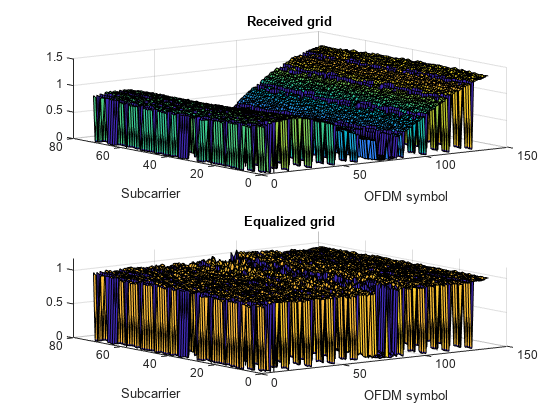lteEqualizeZF
Zero-forcing equalization
Description
[ returns
equalized data in multidimensional array, out,csi]
= lteEqualizeZF(rxgrid,channelest)out,
by applying MIMO zero-forcing equalization to the received data resource
grid in matrix rxgrid, using the channel information
in the channelest input matrix.
For each resource element, the function calculates the pseudoinverse of the channel and equalizes the corresponding received signal.
Alternatively, the channelest input can
be provided as a 3-D array of size NRE-by-NRxAnts-by-P and
the rxgrid input can be provided as a matrix
of size NRE-by-NRxAnts. In this
case, the first two dimensions have been reduced to one dimension
by appropriate indexing through the frequency and time locations of
the resource elements of interest, typically for a single physical
channel. The outputs, out and csi,
are of size (N × M)-by-P.
Examples
Input Arguments
Output Arguments
Version History
Introduced in R2014a
